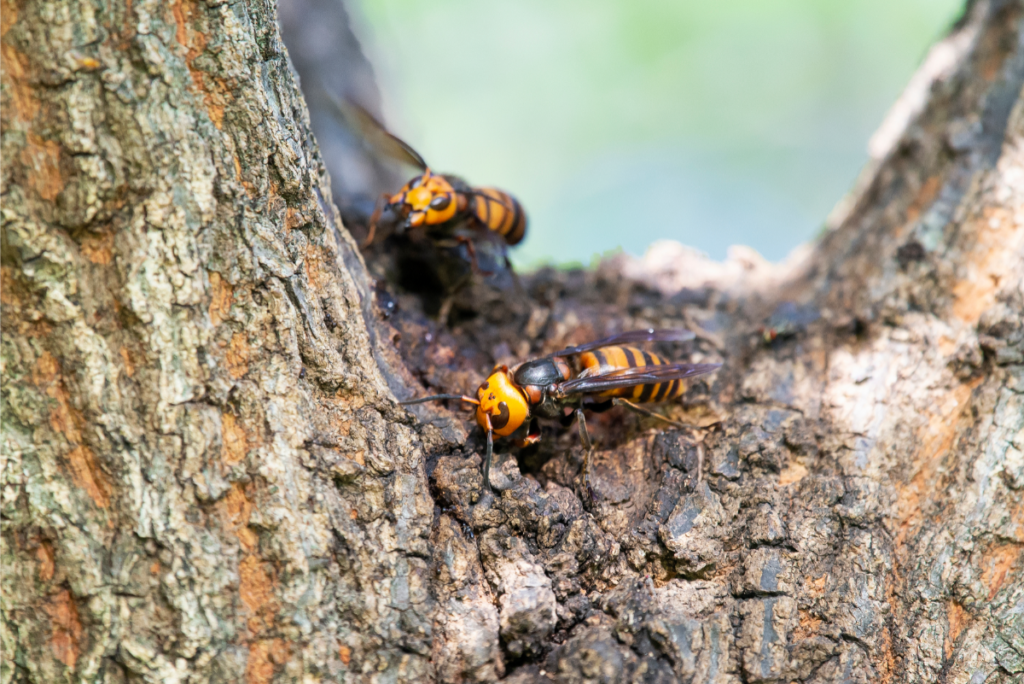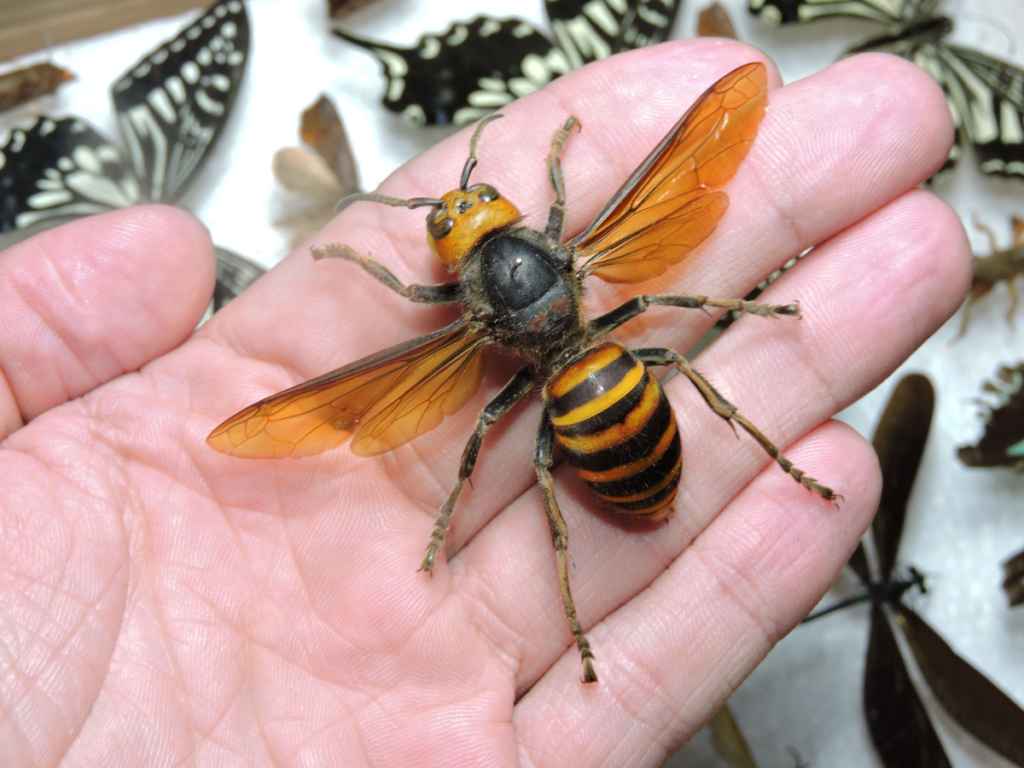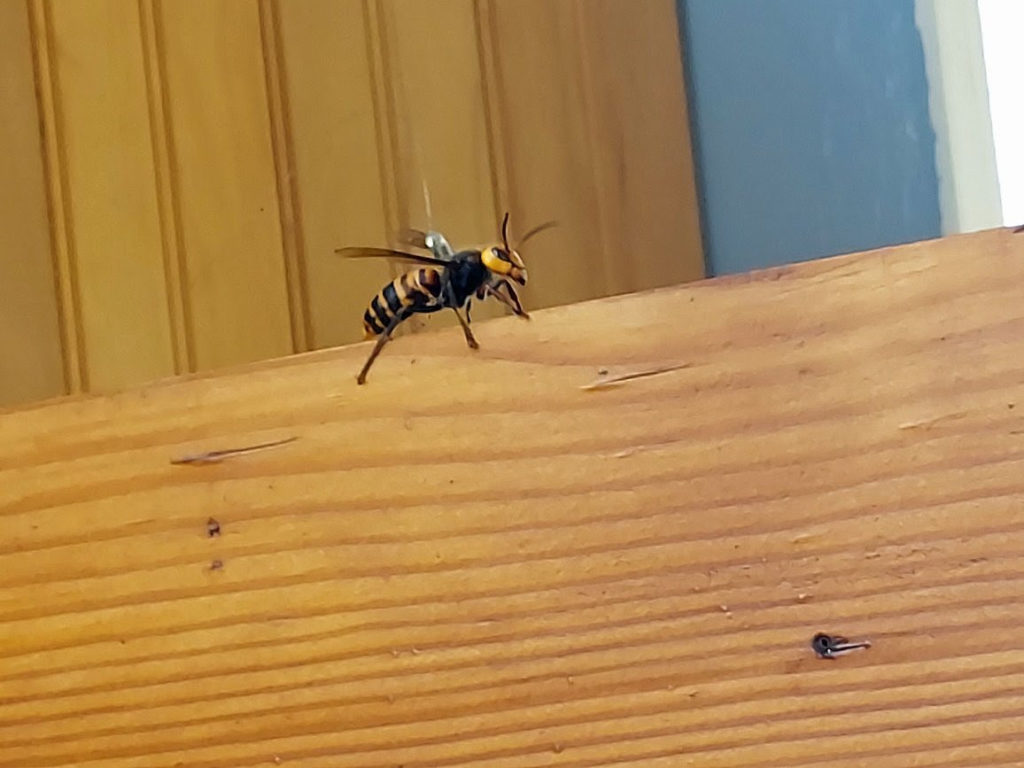Welcome back to the Lab!
It’s been over a year since our issue on the Vespa mandarinia, aka the Asian Giant Hornet (dubbed as the “murder hornet” by the media, an extremely problematic nickname), and despite the absence of a nationwide takeover, the apprehension and anxiety over their presence in the US persists.
Since the first sighting in 2019, three nests of Vespa mandarinia have been discovered and eradicated in Washington state, with a fourth to be eradicated soon. All the nests found were concentrated in an area of North Whatcom county (along the Canadian border), but DNA analyses suggest that at least two of the nests were introduced separately. While the hornets are spreading slower than the media initially implied, they are still cause for concern for those at the Washington State Department of Agriculture.

In order to track down their inconspicuous nests, WSDA researchers have utilized a method used to eradicate another invasive species: the spotted lanternfly. By attaching tiny trackers to a captured hornet, the WSDA can let the hornet do the work for them. So yes, a few nests have been found. Am I starting to worry? My answer is still no, and I want to revisit my reasons why.
What if they were to hypothetically spread? Let’s start with their threat to humans. With a stinger ¼ inch long and and sting that reportedly feels “like a hot nail being driven into [your] leg,” the fear of these hornets is palpable. But before you go out and buy a set of chainmail, consider the following:
News outlets claim that V. mandarinia claims up to 50 lives annually in China and Japan. However, these reports fail to mention that this number reflects total deaths by bees, hornets and wasps combined; not the Asian Giant Hornet alone. The death toll from bees, hornets and wasps is similar in the US, and most are the result of anaphylactic shock.
So no, the Asian Giant Hornet is not going to kill you. Remember, these animals come from a different country, not outer space. Humans have already been living with them for thousands of years.

The more realistic threat, is of course, to honeybees. V. mandarinia seeks out honeybee larvae to feed its own young, and is capable of destroying hives in its quest for sustenance. Yet the Japanese honeybee, Apis cerana japonica, and the asiatic honeybee, Apis cerana, have co-evolved with the Asian Giant Hornet and have developed defenses of their own.
Apis cerana japonica will “trick” the invader, coaxing it into their hive and then swarming once it has entered. The bees will form a “ball” around their intruder, beating their wings in order to cook it to death before it can summon reinforcements.
The bees that are kept by most hobbyists in the US are the European honeybee, Apis mellifera. As with all “native” species (I say “native” because Apis mellifera is not technically native to the US, having been introduced sometime in the 1600’s), any introduced predator can have devastating effects. However, there are techniques that have been used by apiarists in Japan to protect hives from an invasion of V. mandarinia, including surrounding their hives with wire mesh; a method that could be easily replicated by US apiarists.
The most concerning thing about sightings of the Asian Giant Hornets are the reactions from the media. Sensationalist articles can lead individuals to take matters into their own hands in order to protect their well-being; unnecessary pesticide use, bait-trapping and habitat destruction are all methods of hornet removal that will harm (already declining) native insect populations.
For more (reliable) resources on V. mandarinia, check out the following articles:
- An Expert Explains What We Really Need to Understand About Those ‘Murder Hornets’
- About Those Asian Giant Hornets…
- AGH Factsheet (WSU Extension)
Until next time, thanks for visiting the lab!
Bug Wrangler Brenna
brenna@missoulabutterflyhouse.org
Want to revisit a previous Notes from the Lab issue? Check out our archive! Do you want to request a subject for an upcoming issue? Email me at the address above and put “Notes from the Lab” in the subject line.
